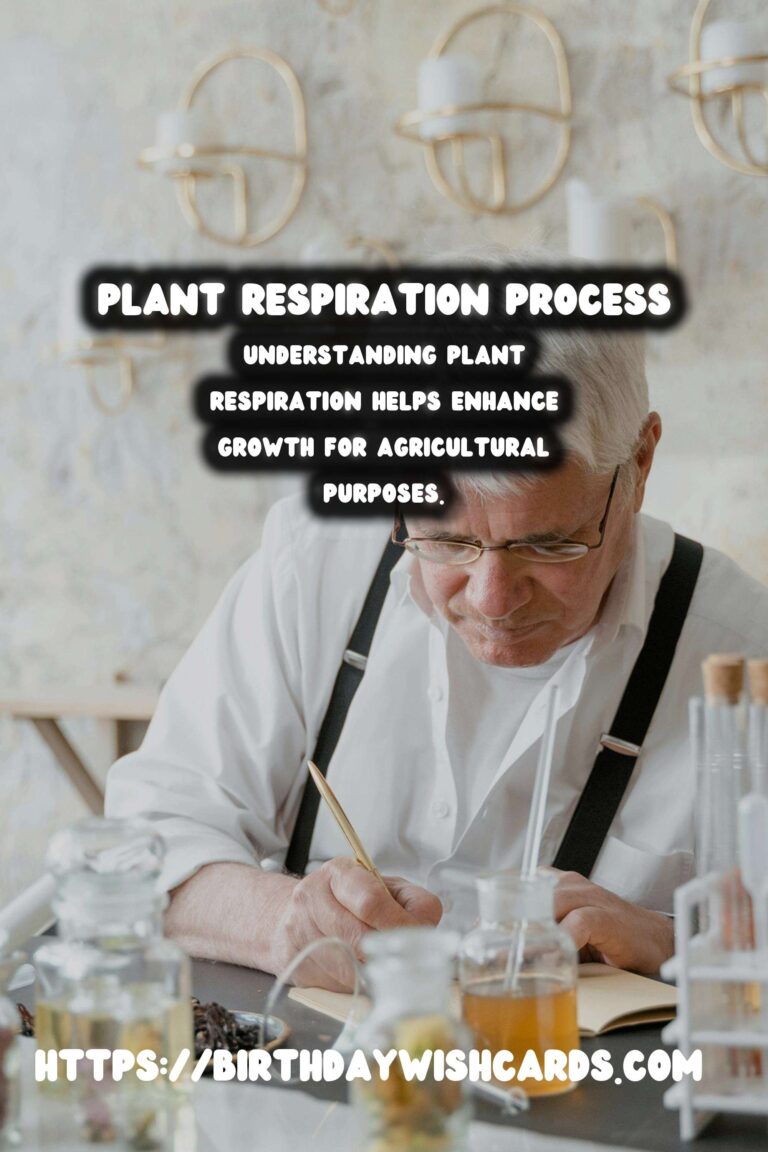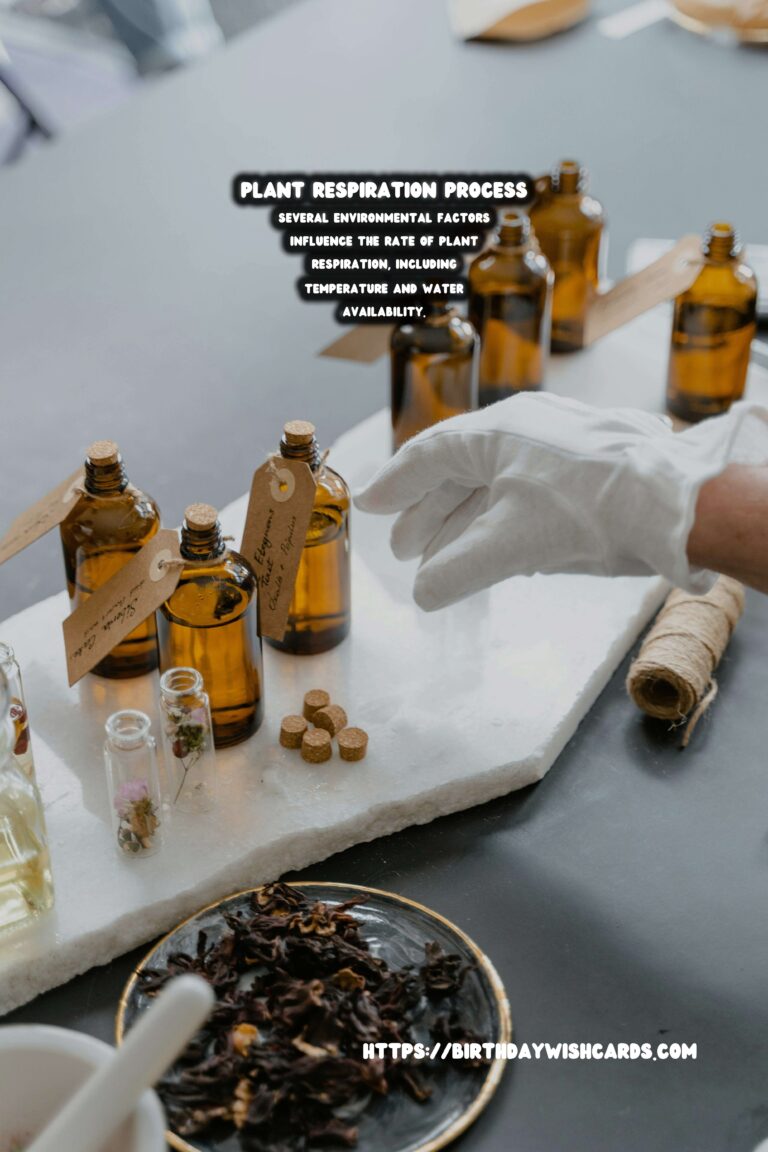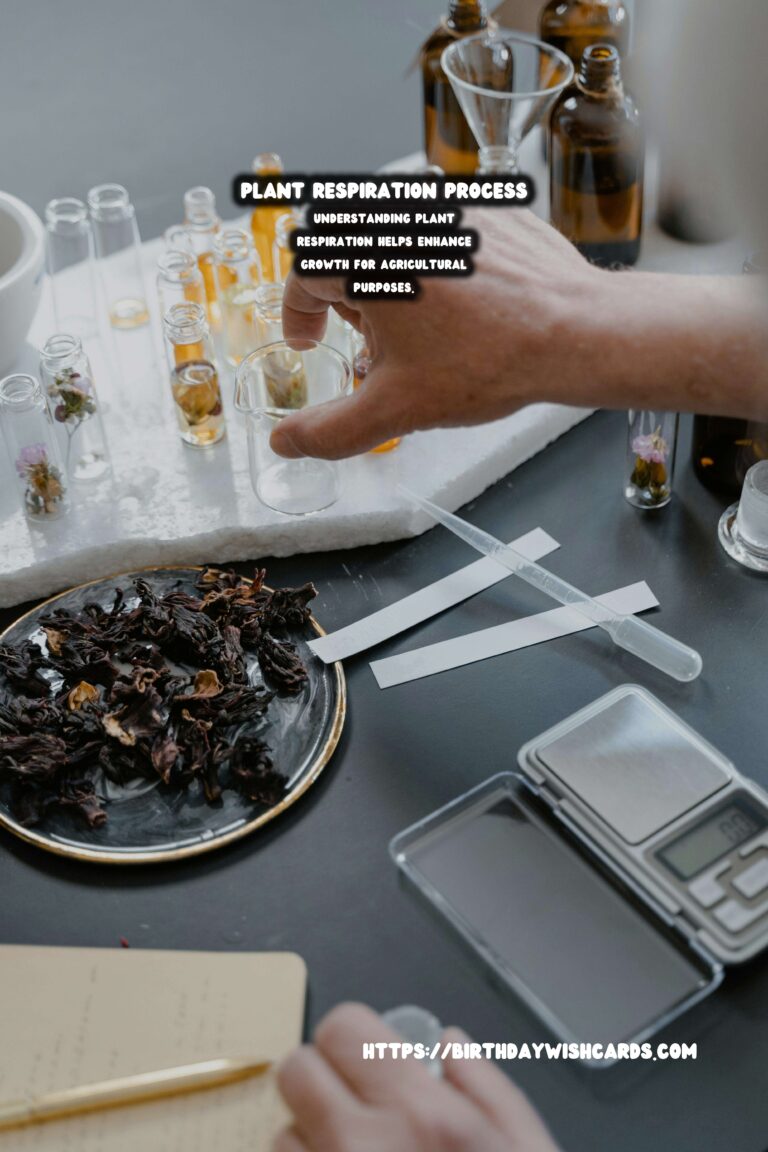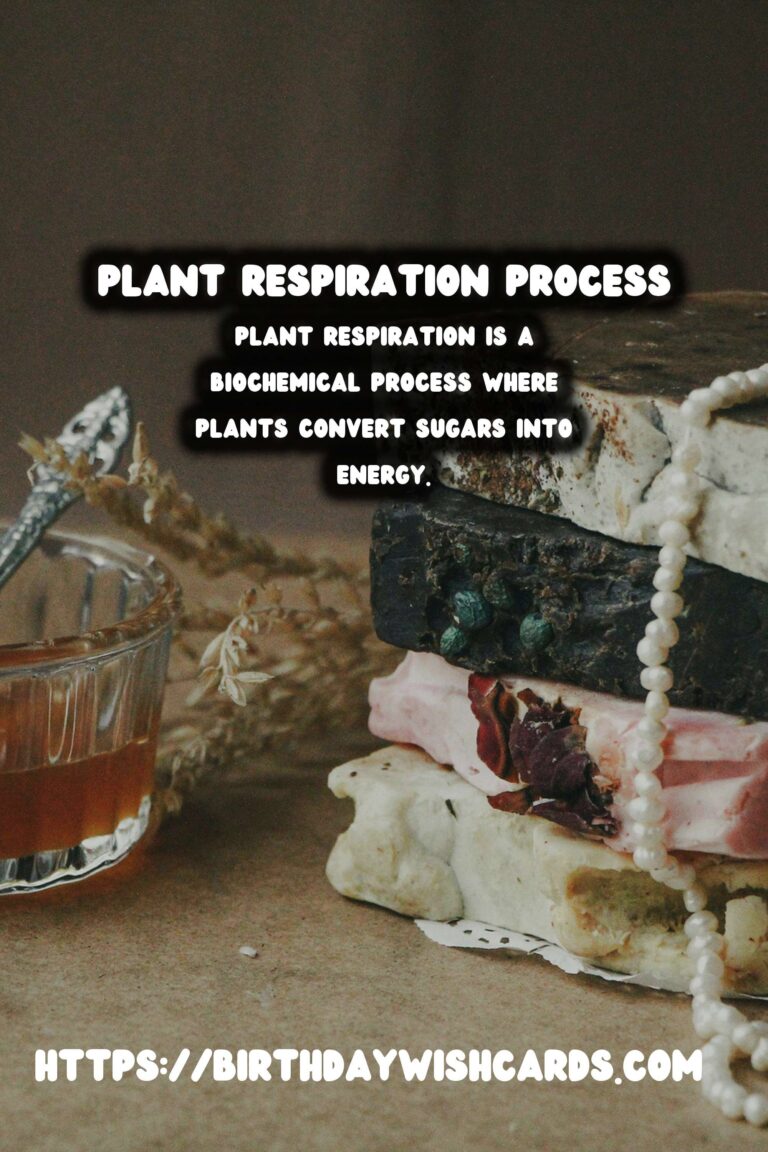
Plants are fundamental to life on Earth, providing oxygen, food, and numerous other ecological benefits. To thrive, plants undergo a process known as respiration, which is crucial for their growth and survival. Understanding plant respiration helps us appreciate how plants contribute to our environment and how we can enhance their growth for agricultural purposes.
What is Plant Respiration?
Plant respiration is a biochemical process whereby plants convert sugars, produced during photosynthesis, into energy. This energy is essential for various physiological processes, including nutrient absorption, growth, and reproduction. Unlike photosynthesis, which occurs only in the presence of light, respiration happens both day and night.
During respiration, glucose is broken down in the presence of oxygen to produce carbon dioxide, water, and energy. This process can be summarized by the equation: C6H12O6 + 6O2 → 6CO2 + 6H2O + Energy (ATP).
The Role of Plant Respiration in Growth
Respiration provides the energy required for various growth processes within the plant. This includes cell division, elongation, and differentiation, which are essential for plant development. The energy generated from respiration fuels the synthesis of vital compounds such as proteins, nucleic acids, and lipids.
Moreover, respiration plays a pivotal role in maintaining the plant’s metabolic balance by regulating the levels of metabolites. Efficient respiration ensures that the plant can adapt to environmental changes and stress conditions, thereby promoting resilience and productivity.
Environmental Factors Affecting Plant Respiration
Several environmental factors influence the rate of plant respiration. Temperature is a significant factor; higher temperatures generally increase the respiration rate, which can affect the plant’s energy balance. However, excessive heat can lead to increased respiration that surpasses photosynthesis, potentially causing energy deficits.
Water availability is another critical factor. Drought conditions can slow down respiration as plants conserve energy and resources, impacting overall growth. Conversely, adequate water supply supports optimal respiration and growth.
Oxygen availability is essential for aerobic respiration. Poor soil aeration can limit oxygen supply, leading to anaerobic respiration, which is less efficient and can produce harmful byproducts.
Measuring and Enhancing Plant Respiration
Understanding plant respiration assists in optimizing growth conditions in agricultural settings. Measuring respiration can be done using respirometers or gas exchange systems that track CO2 emissions. By monitoring respiration rates, farmers and horticulturists can adjust cultivation practices to improve plant health and yields.
Enhancing plant respiration involves ensuring optimal conditions such as proper soil aeration, irrigation, and temperature regulation. Selecting plant varieties that are more efficient in their respiratory processes can also contribute to better growth outcomes.
Conclusion
Plant respiration is a critical process that supports growth and development. By understanding the nuances of respiration, we can better manage plant cultivation, leading to improved agricultural productivity and sustainability. As our global population continues to grow, optimizing plant growth through effective management of respiration will be increasingly important.
Plant respiration is a biochemical process where plants convert sugars into energy. Understanding plant respiration helps enhance growth for agricultural purposes. Respiration provides the energy required for various growth processes within the plant. Several environmental factors influence the rate of plant respiration, including temperature and water availability. Enhancing plant respiration involves ensuring optimal conditions such as proper soil aeration and irrigation. 









#PlantRespiration #PlantGrowth #Agriculture #Photosynthesis #EnvironmentalFactors




